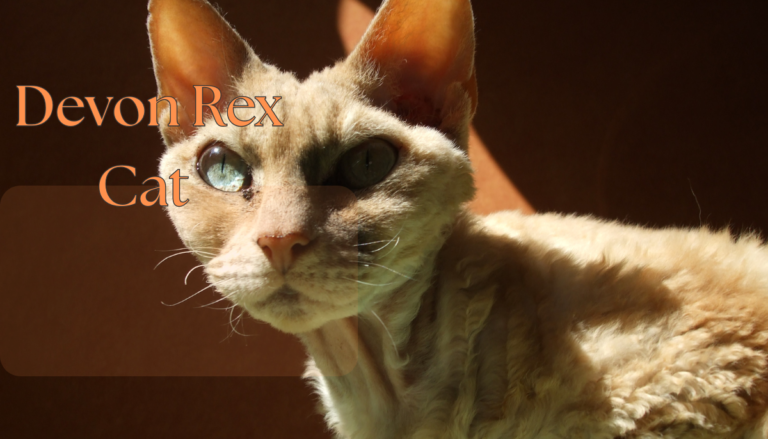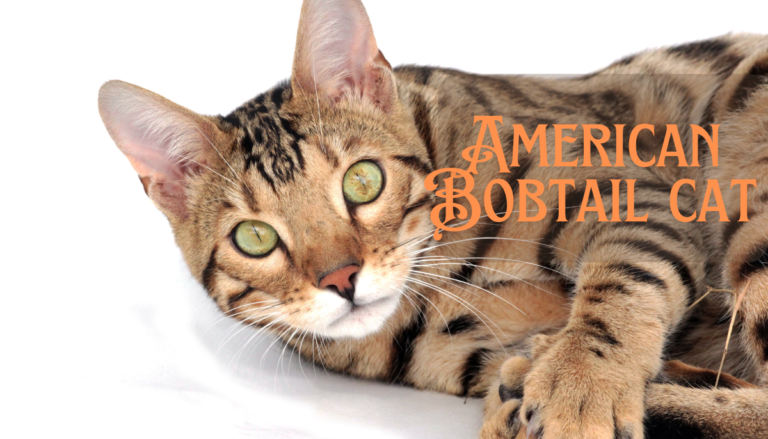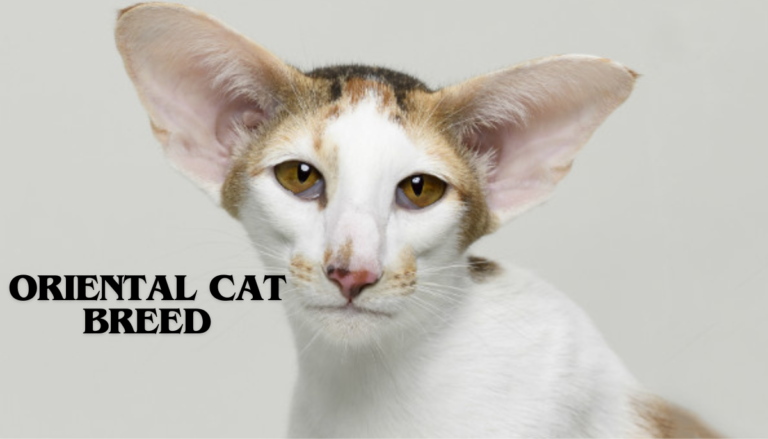Bambino Cat Breed
I. Introduction to Bambino Cat Breed
The Bambino cat, a name meaning ‘baby’ in Italian, is a breed that captures hearts with its eternal kitten-like appearance. This breed is a cross between a Sphynx and a Munchkin, inheriting the hairless quality of the Sphynx and the short stature of the Munchkin, making it truly distinctive.
Bambinos are known for their hairless, wrinkled skin and petite, short-legged body, which contribute to their unique and adorable look. Despite their delicate appearance, they are muscular and agile. Their large, bat-like ears and expressive, almond-shaped eyes add to their enchanting charm.
These cats are not just about looks; they are affectionate, sociable, and playful, often seeking attention and interaction from their human companions. They thrive in environments where they can be part of daily activities and are known for their dog-like loyalty.

Health-wise, Bambinos require regular bathing due to their lack of fur, which leaves oil on their skin. They are also prone to the same health issues as their parent breeds, such as heart conditions and joint issues due to their dwarfism.
Table of Contents
II. Origin and History of the Bambino Cat Breed
A. The Genesis of the Bambino
The Bambino cat breed is a contemporary marvel in the feline world, with its inception dating back to the early 21st century. The breed emerged from a deliberate crossbreeding between the hairless Sphynx and the short-legged Munchkin breeds, aiming to create a cat with distinctive physical traits. This intentional blend of genetics gave rise to a breed that boasts the hairless feature of the Sphynx and the dwarfism characteristic of the Munchkin.
B. Geographical Roots
The Bambino cat first made its appearance in the United States, where the initial breeding programs began. The breed has not been around long enough to have a rich historical background or to be associated with any particular region or culture. However, its parent breeds have deeper roots, with the Sphynx originating from Canada and the Munchkin from the United States.
C. Impact of Origins on Present-Day Characteristics
The Bambino’s lineage plays a significant role in its current-day characteristics. The hairlessness trait, inherited from the Sphynx, is a result of a natural genetic mutation, which has been carefully preserved and passed down through selective breeding. The dwarfism trait, courtesy of the Munchkin lineage, is also a genetic mutation that has been sustained over generations. These traits have been combined to create the Bambino’s unique appearance and have also influenced its health and care requirements.
D. Folklore and Legends
While there are no ancient legends associated with the Bambino due to its recent development, the breed has quickly become enveloped in modern-day folklore. Enthusiasts often describe the Bambino as a mythical creature, akin to a sphinx, due to its hairless body and regal posture. Its elfin features and playful demeanor have inspired a modern mythology that celebrates the breed’s enchanting and mysterious allure.
E. The Bambino’s Place in Cat Breed History
The Bambino cat breed, though new, has made a significant impact on the world of cat breeds. It challenges traditional perceptions of beauty and has become a symbol of diversity in the feline community. The breed’s development reflects a broader trend in the breeding of domestic animals, where aesthetic and physical diversity are increasingly valued.
III. Physical Characteristics of the Bambino Cat Breed
When discussing the physical characteristics of the Bambino cat breed, it’s essential to provide a detailed table that outlines the breed’s specific traits. This information not only serves to educate potential owners but also helps to optimize the content for search engines. Below is a comprehensive table that encapsulates the Bambino’s physical attributes:
| Characteristic | Detail |
|---|---|
| Height | 7–8 inches |
| Weight | 5–9 pounds |
| Life Span | 9–15 years |
| Good With | Families, other pets, and children |
| Temperament | Affectionate, sociable, playful |
| Intelligence | Medium |
| Shedding Amount | Low (due to hairlessness) |
| Grooming | High (requires regular bathing) |
| Exercise Needs | Medium |
| Energy Level | Medium |
| Drool Amount | Not known |
| Coat Length/Texture | Hairless, with a peach fuzz-like texture |
| Colors | Black, white, cream, brown, fawn |
| Patterns | Solid, pointed, shaded, bicolor |
B. Detailing the Bambino Cat Breed’s Physical Attributes
The Bambino cat breed, a delightful blend of the hairless Sphynx and the short-legged Munchkin, boasts a unique set of physical attributes that make it stand out in the feline world. This section delves into the breed’s size, coat type, and color variations, providing a comprehensive understanding of what makes the Bambino truly special.
1. Size and Proportions
The Bambino cat is a small to medium-sized breed, with males typically weighing between 5 to 9 pounds and females slightly less, maintaining a petite and charming stature. The breed’s height can reach up to 17 inches, but its short legs give it a much lower profile.
2. Coat Type and Texture
One of the most striking features of the Bambino is its coat—or lack thereof. These cats may be utterly hairless or have a peach fuzz-like coat. The absence of fur not only accentuates their wrinkled skin but also highlights their prominent ears and expressive eyes. The texture of their skin is soft and warm to the touch, often described as feeling like suede.
3. Color Variations and Patterns
Bambinos come in various colors and patterns, adding to their appeal. Typical colors include black, brown, fawn, cream, and white. As for patterns, Bambinos can be solid, shaded, bi-color, or pointed. These colorations and patterns can sometimes change as the cat matures, with kittens often developing more defined colors and patterns as they grow.
4. Grooming and Maintenance
Due to their hairlessness, Bambinos require regular grooming to maintain their skin’s health. They need frequent baths to remove the buildup of oils on their skin, which would normally be absorbed by fur. Additionally, their skin is sensitive to both cold and sunlight, necessitating protective measures like clothing or sunscreen when appropriate.
5. Health Considerations Linked to Physical Traits
The physical characteristics of the Bambino also influence their health requirements. Their hairlessness means they are more susceptible to skin issues, while their dwarfism can lead to potential joint problems. Prospective owners should be aware of these needs and prepared to provide the necessary care.
C. Distinctive Features of the Bambino Cat Breed
The Bambino cat breed, a delightful concoction of the Sphynx and Munchkin breeds, is adorned with a plethora of distinctive features that set it apart from other feline breeds. This section will highlight these unique physical traits, focusing on the breed’s ear shape, tail characteristics, and other notable features.

1. Ears: The Sphynx’s Legacy
The Bambino’s ears are one of its most striking features. Large, bat-like, and wide at the base, they taper to rounded tips, giving the Bambino an alert and curious expression. These ears are not just for show; they are highly functional, providing the cat with exceptional hearing abilities.
2. Tail: The Munchkin Influence
The tail of a Bambino cat is another distinctive trait. It is slender and flexible, often described as whiplike, and can be as long as the body itself. The tail’s movement is expressive, often revealing the cat’s mood and intentions.
3. The Wrinkled Tapestry: A Hairless Wonder
Bambinos are renowned for their hairless, wrinkled skin, which gives them a unique texture and appearance. Some Bambinos may have a fine down, but most are completely hairless, showcasing their folds and wrinkles, especially around the shoulders and ears.
4. Stature: Short and Sweet
The breed’s short legs are a defining characteristic, a result of the genetic mutation inherited from the Munchkin parent. This gives the Bambino a low-slung, dachshund-like appearance, which is both endearing and distinctive.
5. The Coated Bambino: A Rare Variation
While most Bambinos are hairless, there are some known as ‘coated Bambinos,’ which have a coat. These cats often have hind legs that may be slightly longer than their front legs, giving them a unique stance.
6. A Palette of Colors
Bambino cats come in a variety of colors, including black, white, cream, brown, and fawn. Their skin color often matches what their fur color would be, and they can have patterns such as solid, pointed, shaded, and bicolor
IV. Temperament and Personality of the Bambino Cat Breed
The Bambino cat breed, a delightful blend of the hairless Sphynx and the short-legged Munchkin, is renowned for its endearing temperament and personality. This section will explore the breed’s demeanor, sociability, and common behavioral traits, providing insights into both the joys and challenges of living with a Bambino.
A. The Bambino’s Disposition
Bambino cats are affectionate and full of character, enjoying the company of their family and reluctant to be alone for very long. This small to medium-sized cat enjoys playing but doesn’t need too much exercise. Because it is hairless, the Bambino is more vulnerable to injuries than other cats and should be protected from other pets’ bites or scratches as well as excessive sun exposure.
B. Sociability and Friendliness
Bambinos are known for being very playful and affectionate. They love to be surrounded by company and may become depressed if left alone for more than a few hours. They enjoy homes with gentle children and pets, as they are sociable and friendly, but care must be taken to protect Bambinos’ delicate skin from injury when playing.
C. Behavioral Traits
Bambino cats are known to be affectionate, playful, and people-focused. They are very social and get along with everyone. These short-legged cats also tend to be very vocal and demand attention from their human companions. They do not like to be alone for long periods, so it’s important to spend time with your fur baby.
D. Managing Breed-Specific Behaviors
To manage the Bambino’s need for attention and companionship, it’s advisable to provide a stimulating environment with plenty of interactive toys and games. Regular playtime and interaction can help prevent feelings of loneliness. Additionally, because of their sociable nature, Bambinos may benefit from the company of another pet, provided that pet is gentle and not likely to injure them.
E. Addressing Behavioral Issues
If behavioral issues arise, such as excessive vocalization or clinginess, it’s important to address these with patience and consistency. Establishing a routine can provide a sense of security for Bambinos, and positive reinforcement training can help manage their demands for attention.
V. Care and Maintenance of the Bambino Cat Breed
A. Grooming Needs
The Bambino cat, with its distinctive hairless appearance, requires a unique grooming regimen to maintain its skin’s health. Unlike their furry counterparts, Bambinos do not need brushing but do require regular baths to manage the oil buildup on their skin.
1. Bathing Tips:
- Use a gentle, hypoallergenic shampoo to prevent skin irritation.
- Bathe your Bambino weekly or bi-weekly, ensuring the water is warm—not hot—to avoid chills.
- Rinse thoroughly to remove all soap residues.
- Dry completely with a soft towel to prevent colds.
2. Skin Care:
- Apply a moisturizing lotion or oil post-bath to keep the skin soft and supple.
- Protect from excessive sun exposure, which can lead to sunburn.
3. Nail and Ear Care:
- Trim nails regularly using specially designed cat nail clippers.
- Clean ears gently with a vet-approved ear cleaner and cotton balls to prevent wax buildup.
4. Dental Hygiene:
- Brush teeth frequently to prevent plaque buildup, using a toothbrush and cat-specific toothpaste.
5. Recommended Accessories:
- A soft, cozy bed to protect their skin from rough surfaces.
- Clothing or sunblock for protection when exposed to sunlight.
By adhering to these grooming needs, you can ensure your Bambino remains healthy, happy, and comfortable. Remember, regular check-ups with a veterinarian familiar with the breed are also crucial for maintaining your Bambino’s overall well-being.

B. Health Considerations for the Bambino Cat Breed
The Bambino cat, a cross between the hairless Sphynx and the short-legged Munchkin, inherits health considerations from both parent breeds. They may be prone to skin conditions due to their lack of fur and require regular bathing to prevent bacterial infections. The breed can also inherit hypertrophic cardiomyopathy (HCM) and patellar luxation.
1. Common Health Problems:
- Skin issues like acne and oiliness due to hairlessness.
- Pectus excavatum, a chest cavity malformation.
- Hypertrophic cardiomyopathy (HCM), a heart condition.
- Patellar luxation, where the kneecap dislocates easily.
2. Veterinary Care:
- Regular check-ups to monitor for inherited conditions.
- Dental care to prevent tooth decay and gum disease.
3. Preventive Measures:
- Use vet-approved sunscreen when outdoors to prevent sunburn.
- Keep them warm, as they are susceptible to cold due to lack of fur.
4. Lifespan and Health Tips:
- Bambinos have an average lifespan of 12-14 years.
- Promote a longer life with a balanced diet, regular exercise, and mental stimulation.
- Ensure a stress-free environment and companionship to prevent loneliness-related stress.
Caring for a Bambino cat involves understanding their unique needs due to their distinctive physical traits. With proper care and regular veterinary visits, Bambinos can lead a full and healthy life.
C. Nutrition for the Bambino Cat Breed
Ensuring a balanced diet for the Bambino cat is crucial for their overall health and well-being. These unique cats require a diet that’s high in protein to support their energetic lifestyle and maintain their skin health. Here are some tips for feeding your Bambino:
- High-Quality Diet: Choose cat foods where meat is the first ingredient, as Bambinos need a diet rich in proteins, fats, and vitamins.
- Life Stage Appropriate: Tailor the diet to your Bambino’s life stage. Kittens need more calories, while adults require a balanced diet to prevent obesity.
- Allergies and Sensitivities: While Bambinos are not known for specific dietary restrictions, they are not hypoallergenic and can still produce allergens.
- Feeding Schedule: Adult Bambinos should be fed twice daily, once in the morning and once in the evening. Kittens may need more frequent meals, up to three or four times a day.
- Portion Control: Monitor portion sizes to prevent overeating. Use measured amounts based on your vet’s recommendation to maintain a healthy weight.
By following these guidelines, you can help your Bambino maintain a healthy diet that supports their unique needs and keeps them thriving.
D. Exercise for the Bambino Cat Breed
The Bambino cat, with its playful spirit and short legs, requires a tailored exercise plan to stay healthy and stimulated. While they are active, their shorter legs can tire more easily, so it’s important to balance activity with rest.
1. Types of Exercise:
- Playtime: Engage in interactive play with toys that encourage chasing and pouncing. This can be done in short bursts throughout the day.
- Agility Training: Set up low obstacles and tunnels for your Bambino to navigate. This provides mental stimulation as well as physical exercise.
- Walks: Short, supervised walks indoors can be beneficial, especially if you use a harness designed for cats.
2. Duration and Frequency:
- Aim for multiple short sessions of play, about 10-15 minutes each, spread throughout the day.
- Agility training can be done 2-3 times a week to keep it fun and challenging.
3. Breed-Specific Needs:
- Avoid encouraging your Bambino to jump from high surfaces, as this can strain their short legs.
- Provide scratching posts and low cat trees for climbing, as Bambinos still enjoy these activities but at a safer height.
By incorporating these exercises into your Bambino’s routine, you can ensure they remain active, healthy, and content.
VI. Suitability for Families and Other Pets to the Bambino Cat Breed
The Bambino cat breed, a unique combination of the hairless Sphynx and the short-legged Munchkin, is a delightful addition to any family, including those with children and other pets. Understanding the breed’s compatibility, special considerations for multi-pet households, and environmental needs is crucial for a harmonious home.
A. Compatibility with Children and Other Animals
Bambinos are known for their high affection levels and sociability, making them excellent companions for families with children. They are playful and enjoy interaction, but due to their delicate skin, it’s important to supervise playtime to prevent any accidental injuries. When it comes to other animals, Bambinos are generally friendly and can coexist peacefully with other pets, provided they are introduced properly and gradually.
B. Multi-Pet Household Considerations
In a multi-pet household, it’s essential to ensure a smooth introduction of a Bambino to existing pets. Start by allowing pets to sniff each other under a door or through a pet gate. Gradual, supervised interactions help build familiarity and reduce the potential for territorial behavior. It’s also advisable to have separate feeding areas to prevent any food-related disputes.
C. Environmental Needs
Bambinos are well-suited to indoor life and do not require extensive space to thrive. However, they do enjoy vertical spaces like cat trees or safe furniture to climb, satisfying their need for play and exploration. They should be kept in a comfortable and warm environment, especially during colder months, to compensate for their lack of fur. Regular care is needed to prevent skin dryness and sunburn.
VII. Adoption and Breeder Considerations for the Bambino Cat Breed
Adopting or purchasing a Bambino cat is a significant decision that involves various considerations. This comprehensive guide will explore the benefits of adoption, how to select a reputable breeder, and the financial aspects of bringing a Bambino into your home.
A. The Benefits of Adoption
Adopting a Bambino from shelters or rescue organizations is a compassionate choice that can be incredibly rewarding. Not only does it give a cat in need a second chance at a loving home, but it also helps alleviate the burden on these facilities. Adopted cats often come with essential vaccinations, spaying or neutering, and sometimes even microchipping, which can save you initial costs. Moreover, adoption supports the fight against animal homelessness and the unethical breeding practices that contribute to overpopulation.
B. Choosing a Reputable Breeder
If you’re set on purchasing a purebred Bambino, it’s crucial to select a reputable breeder. A responsible breeder will prioritize the health and well-being of their cats, engaging in ethical breeding practices and conducting thorough health screenings. They should be transparent about their breeding practices, provide a clean and nurturing environment for the kittens, and offer documentation of the cat’s health history. Ethical breeding ensures the longevity and health of the breed, preventing the propagation of genetic disorders.

C. Financial Considerations
The cost of adopting or purchasing a Bambino cat can vary widely. Adoption fees typically range from $68 to $317, depending on the shelter and the cat’s age and health. In contrast, purchasing from a breeder can cost anywhere from $300 to $1500, or even more for rare breeds. It’s important to consider not only the initial adoption or purchase cost but also ongoing expenses such as food, litter, veterinary care, and any special needs specific to the Bambino breed.
VIII. Conclusion: Embracing the Bambino Cat Breed
In the realm of feline companions, the Bambino cat breed stands out with its distinctive characteristics and endearing temperament. As we conclude this comprehensive exploration, let’s recap the key points that make the Bambino a unique and captivating choice for cat enthusiasts.
A. The Bambino’s Defining Traits
The Bambino, a cross between the hairless Sphynx and the short-legged Munchkin, is celebrated for its eternal kitten-like appearance and affectionate nature. These cats are characterized by their hairless, wrinkled skin, petite stature, and large, bat-like ears. They are sociable, playful, and thrive on human interaction, often displaying a dog-like loyalty to their owners. Their health needs, such as regular bathing and protection from extreme temperatures, are as unique as their appearance.
B. The Call for Responsible Ownership
Prospective Bambino owners must recognize the importance of responsible pet ownership. These cats require dedicated care, including regular grooming, balanced nutrition, and appropriate exercise to maintain their health and happiness. It’s essential to consider the breed’s compatibility with your lifestyle, the presence of children or other pets, and the environmental needs specific to hairless breeds.
FAQ’s about Bambino Cats
What are the main characteristics of Bambino cats?
Bambino cats are known for their hairless, wrinkled skin and short legs, a result of their Sphynx and Munchkin heritage. They are affectionate, sociable, and enjoy being part of family activities
How should I groom and maintain a Bambino cat’s hairless body and delicate skin?
Regular bathing with a gentle, hypoallergenic shampoo is necessary to remove oil buildup on their skin. Moisturizing their skin can help prevent dryness, and using sunscreen is recommended to protect against sunburn
Are there any specific health concerns associated with Bambino cats?
Bambino cats may be prone to conditions like hypertrophic cardiomyopathy (HCM) and patellar luxation. Their hairless skin also requires protection from injuries and sun exposure
What behavioral traits can I expect from a Bambino cat?
Bambinos are playful, energetic, and highly social. They tend to be vocal and seek attention from their owners. They do not like to be alone and may require companionship to prevent loneliness
Is it advisable to breed Bambino cats at home?
Breeding Bambinos at home is not recommended without a thorough understanding of their genetic health risks and the ethical considerations surrounding their breeding due to potential health problems associated with their short limbs and hairlessness
How do Bambino cats fare in outdoor environments?
Bambino cats are adventurous and may enjoy supervised outdoor playtime. However, their exposed skin requires protection from the sun, and they should not be left outside unsupervised due to their vulnerability to the elements and potential predators






